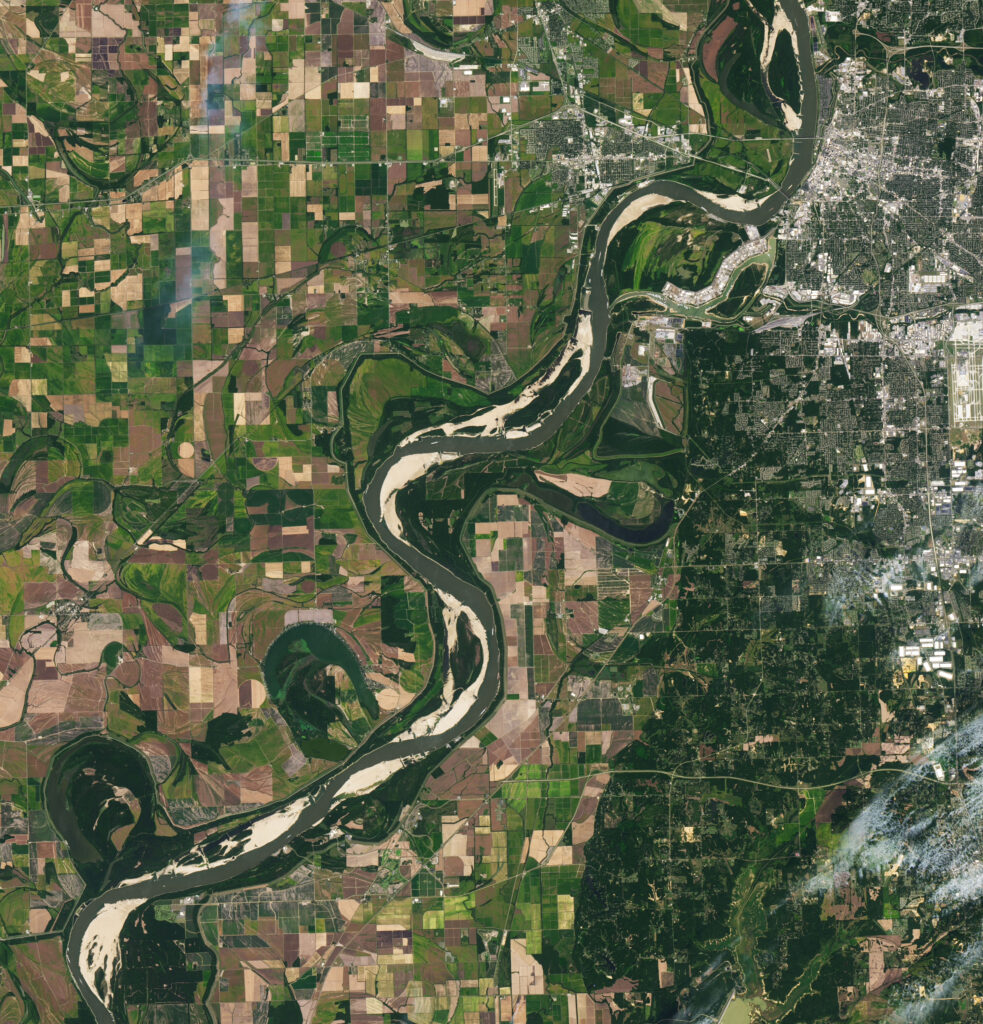
Low water levels in the Mississippi River in September 2023. Credit: NASA Earth Observatory
AGU News
WaterSciCon press registration open
Registration is open for the Water Science Conference, a collaboration of AGU and the Consortium of Universities for the Advancement of Hydrologic Science, Inc. (CUAHSI) convening 24-27 June in Saint Paul, Minnesota. The program features the confluence of science, policy and community and sessions coupling research to applied workshops. Interested reporters and press officers should email [email protected] with credentials. [press information][scientific program][media advisory]
Featured Research
Louisiana’s 2023 “dire” water crisis: why it happened and could hit again
In the summer and fall of 2023, Louisiana faced two water crises: a severe drought and such low water levels in the Mississippi River that saltwater began to creep up the channel, threatening already stressed drinking water supplies. High evaporation rates were mostly responsible for the conditions, a new study reveals, with low precipitation playing a secondary role. [LSU press release][Geophysical Research Letters research]
Top 20% of Shanxi coal mines emit half of region’s methane
The Shanxi province is China’s most prolific coal producer; coal mining is one of the world’s top methane sources. Coal producers in the region emitted 1.2 million tons of methane each year between 2021-2023, with about half of all emissions coming from just 20% of the facilities, a new study finds. The results challenge previous, lower estimates. [Geophysical Research Letters research]
Peat patches could expand, store more carbon as Arctic warms
Rapid warming in the Arctic is thawing permafrost, which can release vast volumes of carbon. But warmer temperatures may also prompt peat patches to grow, storing carbon as they do, a new study suggests. Peatlands growth might partially offset carbon release from permafrost thaw. [JGR Biogeosciences research]
Carbon storage in US cover crops less feasible than previously estimated
Cover crops are often pointed to as an important potential path for carbon storage. A new estimate of the potential for cover crops’ carbon storage in U.S. agricultural lands finds the “realistic” carbon storage is about a third of what was previously estimated, [Earth’s Future research]
Planted windbreaks are crucial to erosion control in African deserts
Africa’s most arid landscapes are at risk of blowing away, and as more areas succumb to desertification, the erosion risk grows. Planting vegetated windbreaks is a crucial way to slow down winds and decrease erosion risk, a new study highlights. [Earth’s Future research]